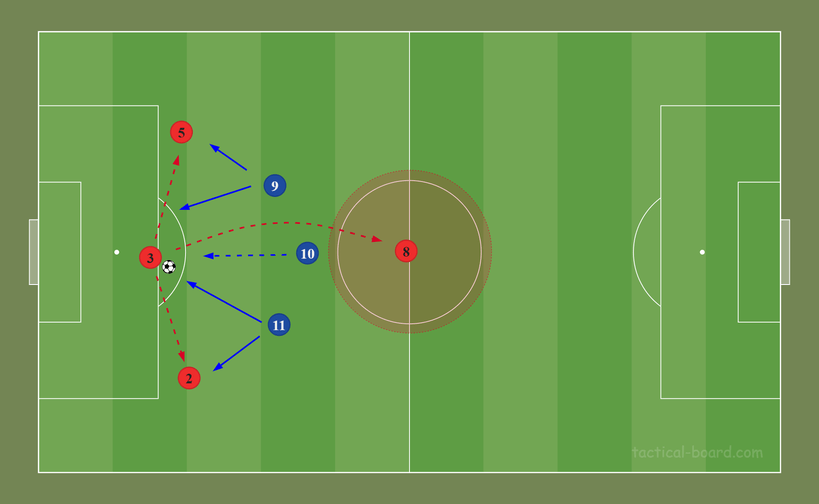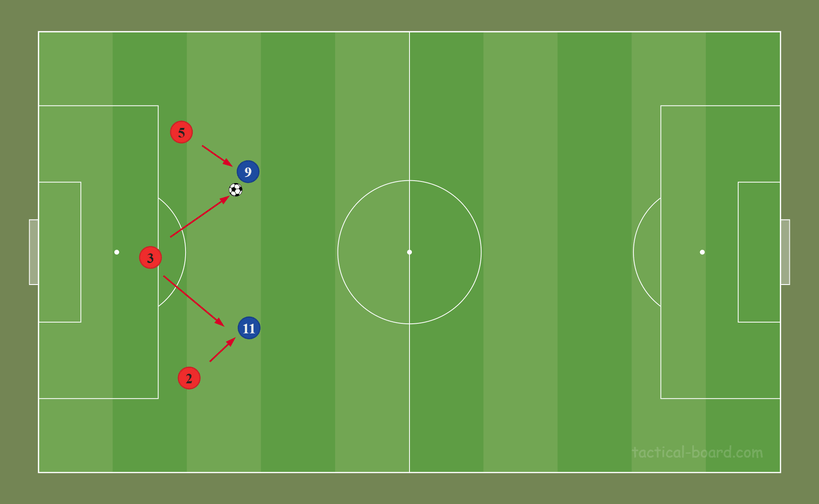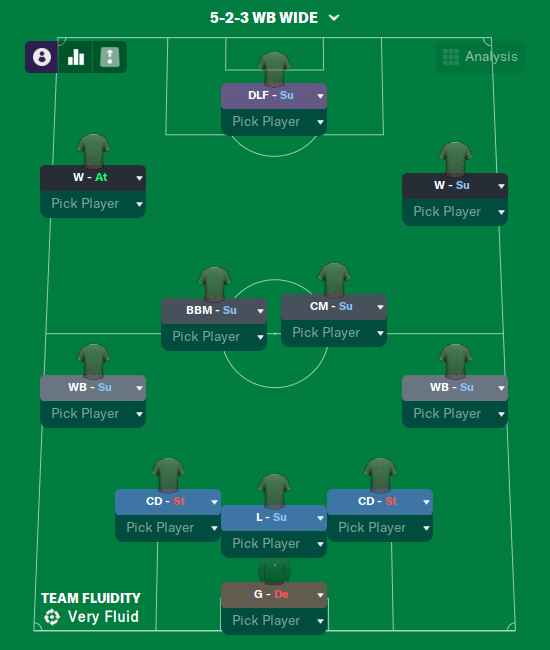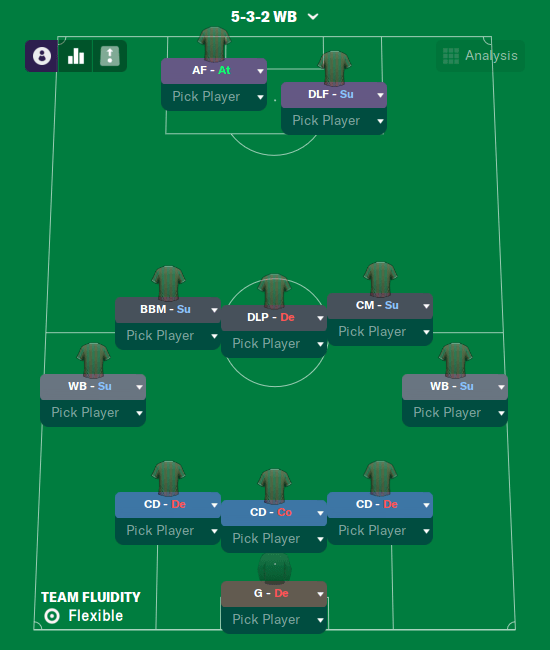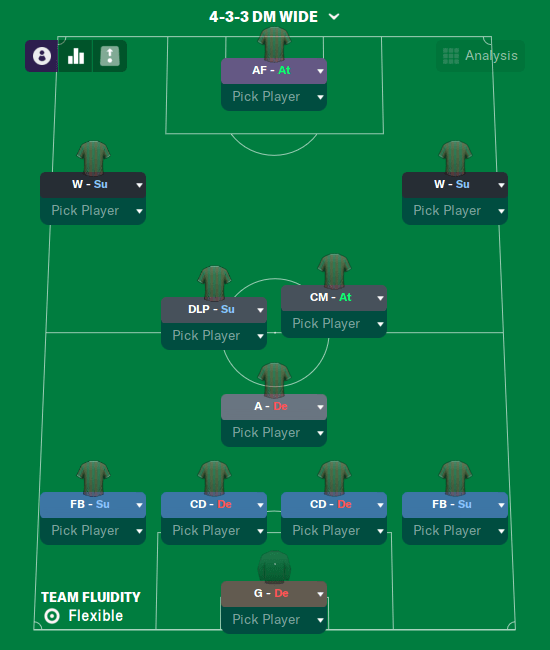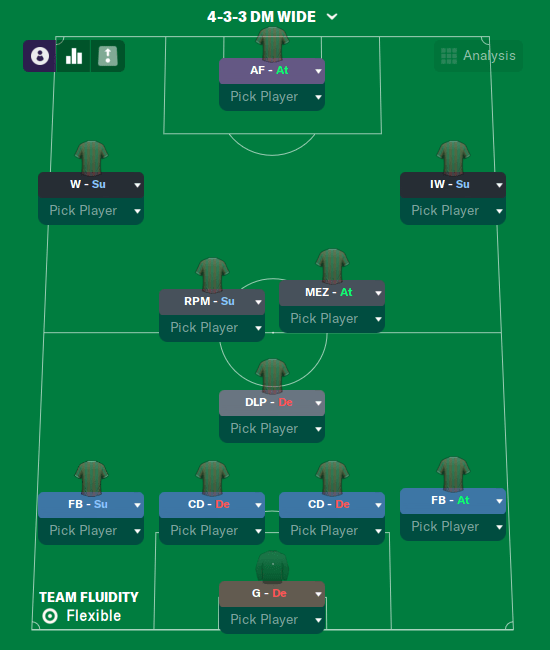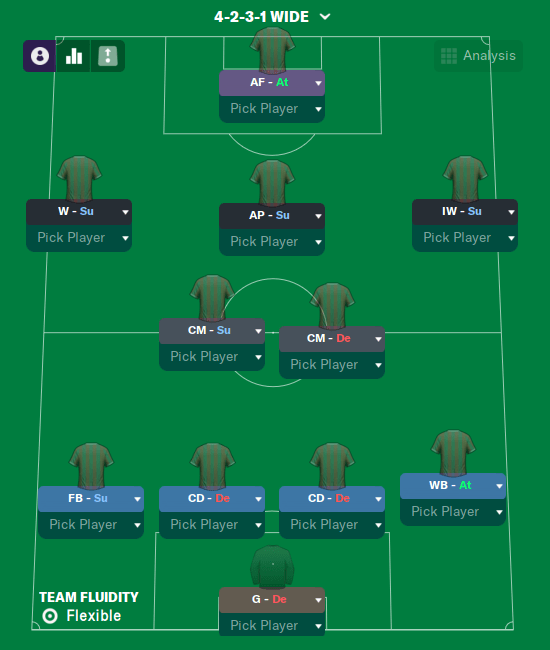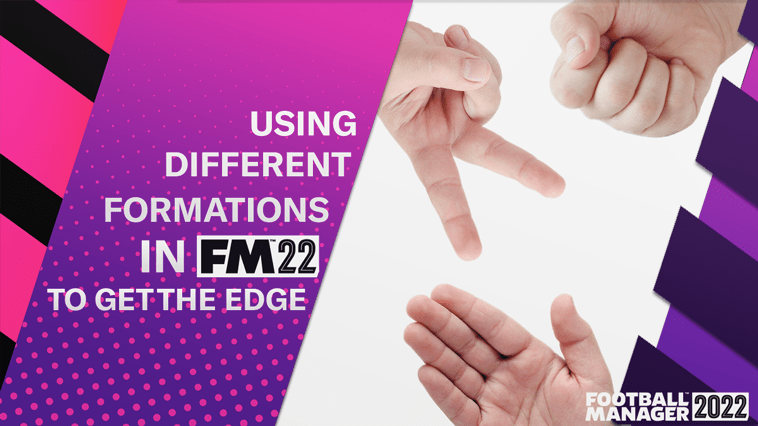
Using different formations in FM22 to get the edge
The manager of the 1978 World Cup-winning Argentina side, César Luis Menotti, once famously said: “4-2-3-1, 4-3-3, 5-3-2… football has three mysteries, space, time and guile; the rest are phone numbers”. Menotti is, in many ways, a romantic; however, it seems that in his thinking he failed to realise (or to properly acknowledge) that one of those mysteries is very much tied to what he calls “phone numbers”. Tactics (more specifically, formations) are the tools a manager has to manipulate space in a football match. Everyone plays with eleven players, so there are always advantages to be gained and lost. Let’s take a look at how we can best utilise different formations in FM22 to gain an edge on the pitch.
General Considerations
For all of these to work, you have to scout your opposition extensively; you need to make sure how they’re going to set up against you. Having a scout scouting your next rivals as an ongoing assignment will help you. You can also make sure to check their previous matches, so they don’t spring any tactical surprises on you.
You also have to make sure you’ve got multiple tactics under training, if possible with different shapes. If you’re thinking of making alterations ahead of an important match, make sure to give your players time to learn the setup. Focusing on tactical training in the prior weeks will go a long way to keeping your surprise move into a tragic one.
Front Two vs. Back Three
The great tactical innovation of the 1980s, the flat back three came from a simple realization: if teams were playing narrow 4-4-2s and 4-3-3s, there was no need to play a flat back four. Who invented it is a fiercely disputed fact, with names like Carlos Bilardo, Ćiro Blažević and Sepp Piontek making a claim.
Nowadays, however, the back three has other uses. With the rise of gegenpressing outfits, the flat 4-4-2 made a return as one of the most effective pressing shapes. That meant the return of front twos, and that’s where a back three can get you an edge. Essentially, it gives the defending team a numerical advantage; your players will be able to nullify the main striker whilst chasing the dropping second striker and still getting cover with the extra man. However, there’s also an advantage when attacking, particularly in the build-up phase. With the extra defender, the task of pressing forwards gets a lot harder. They have to continually shift to close down passing lanes and put pressure on the receiver. Worse even, any help that they get from the midfield just opens up a lane for a long ball out.
How to Apply it in Football Manager
When facing any front two shape (4-4-2 Narrow or Wide, 4-3-1-2, 5-3-2, etc), move into a back three to get the numerical advantage in defence. The configuration of the trio of defenders is usually two man-markers (Stopper or Defend duty) and a cover defender (Defend or Cover duty), but there are different ways to set this up. The use of a Libero can unleash serious problems for your rivals; however, this also requires a very special type of player. Be careful if using Wide Centre-Backs as you may turn your numerical advantage into a positional disadvantage.
This of course will also mean the usage of Wing-Backs or Wide Midfielders; make sure you have players who can fulfil those roles. Likewise, back threes are generally accompanied by either a midfield two (3-4-3 or 5-2-3) or a midfield three (3-5-2, 5-3-2, 5-2-1-2). Your choice on the matter should be informed by the players at your disposal and your usual setup. However, if matching up against a back three, I’d suggest going for a front three, so as to not fall on the same trap you’re setting up.
Midfield Two vs. Midfield Three
The year is 2005 and José Mourinho has just arrived in England. He’s about to turn his side into serial winners, and in the process he’s going to destroy the quintessential English shape, the 4-4-2. When explaining his success, years later, Mourinho will be very clear. “There’s no way a midfield two beats a well-drilled midfield three”, he said.
The reason is simple, they always have an extra man. When each man sticks to their man, someone is getting pulled out of place. If their wingers come narrow, your Full-Backs are free to charge forward and give numerical advantage to your own wide men. Whenever one of their Centre-Backs pushes forward, they leave a giant gap in the back. In the case one of the forwards drops deep, well… they might as well never attack again.
Another advantage is midfield three can circulate the ball far better than a midfield two. In the modern press-and-possess era of football, that is a huge advantage. In defence, much like with the back three, you can man-mark and have a cover man.
How to Apply it in Football Manager
It has now become a meme, the Assistant Manager’s favourite cry for help. But you can actually get overrun in midfield. Any midfield two will have serious problems keeping possession against a mid three. When facing a 4-4-2, a 5-2-3, a 3-4-3, throw a spanner in your rival’s work by committing to the extra midfielder and taking the ball away from them.
Any midfield three will do the trick, provided the roles are correctly selected. The old adage of “holder-passer-runner” will work wonders. As for the rest of the setup, once again you might want to consider what kind of players you have at your disposal and what you regularly play. Depending on whether you play a flat three, an attacking midfielder or a defensive midfielder, you’re going to have to fill different needs, and you will match better against different shapes.
Wing-Backs vs. Wide Midfielder/Full-Back
The return of the back three to elite football and the rise of the Wide Forward has given place to another tactical development, the Wing-Back. Once a relic of the old day of muddy pitches, heavy leather balls and catenaccio the use of a sole player to cover the entire length of the pitch on the wings as teams require a single player to provide width on each side to accommodate for the aforementioned tactics.
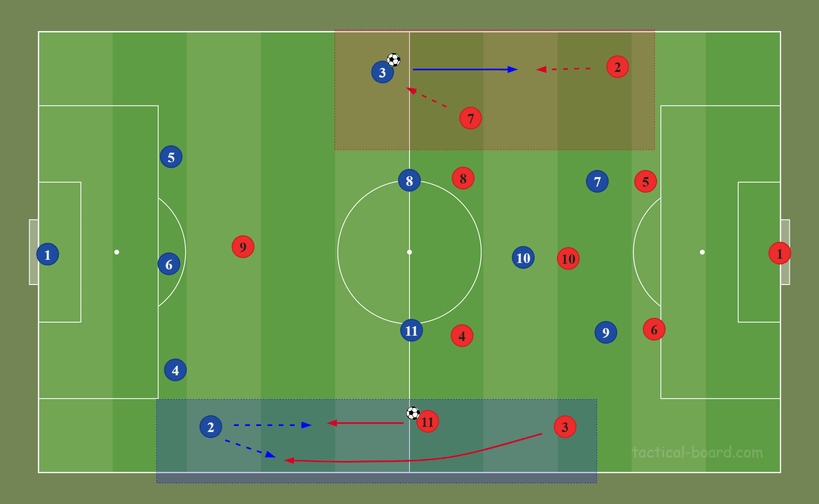
Whilst they’re now a common sight on top tier clubs, there’s a way you counter them, particularly on the attack, and it comes from rather more modest sources. Playing a Wide Midfielder with a Full-Back sitting behind can be a good way to counter pacey and tricky Wing-Back. The reason is simple, they offer the possibility of doubling up on them, both for marking duties. On the attack, the overlapping full-back will give essentially the marking duties of two men to the sole Wing-Back; this puts them again at a disadvantage.
How to Apply it in Football Manager
This is the hardest of the positional exploits to apply on FM, particularly against formations that use wide forwards like a 4-3-3 or a 3-4-3, as defensive positioning in the game translates that as a wide defensive formation.
However, against a back three, where the Wing-Back is positionally the only wide player, this can be used to exploit the opposition’s flanks. Formations like a 4-1-4-1, 4-2-3-1 or 4-5-1 (and even a 3-4-3 with the right roles setup), can give those pesky Wing-Backs too much to chew. Instructions like Focus Play Down Both Flanks can exacerbate the problem for your rival.
AM vs. DM
It’s not news that the classic number ten is all but extinct. Juan Román Riquelme is often credited as the last one; you can still find players in the same style, like Mesut Özil and Bruno Fernandes. However, they are few and far between. Still, 4-2-3-1 remains a popular shape, with many teams employing more mobile, dynamic players in the position.
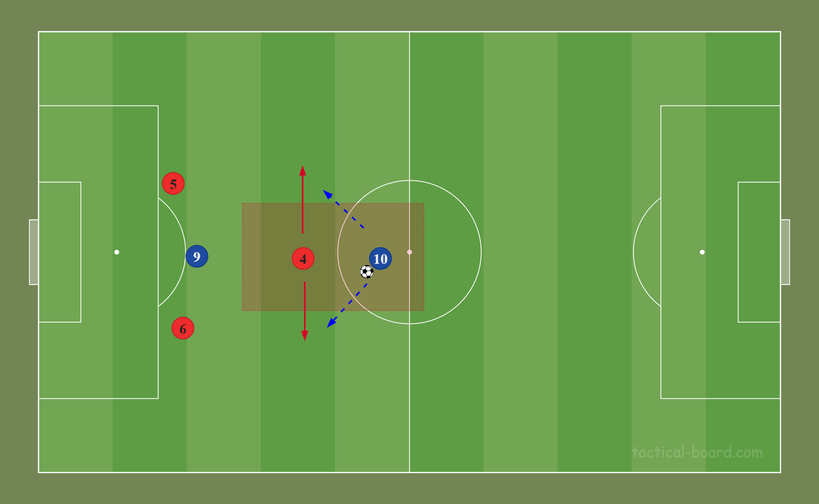
However, the problem that nullified the classic 10 remains. When the player who carries most of the creative responsibility plays that close to the rival, it’s easy to mark him out. Mourinho was credited with the creation of the Makelele role, the water-carrier of the team. Modern number 10s would probably run circles around the French legend (who was given a nice walkabout by Riquelme himself). Still, as creators have gotten more mobile and versatile, so have destructors.
How to Apply it in Football Manager
You’ll need to be particularly attentive to implement this one. AMCs can be used to be the main creative force of a team, but they can also be used as decoys. Roles such as a Shadow Striker or as an Attacking Midfielder on Attack are there on a different mission. However, if you’re facing formations such as 4-2-3-1, 4-3-1-2 or 5-2-1-2, it might be a chance to try and get the upper hand. Shapes like 4-1-4-1, 4-5-1 or 4-3-3 place a dedicated Defensive Midfielder which can act as the destructor to nullify the opponents most creative player. Watch the match close and try to figure out who’s actually pulling the strings. If you feel you might be sending your DM after the wrong target, it might be useful to revert to more familiar tactics.
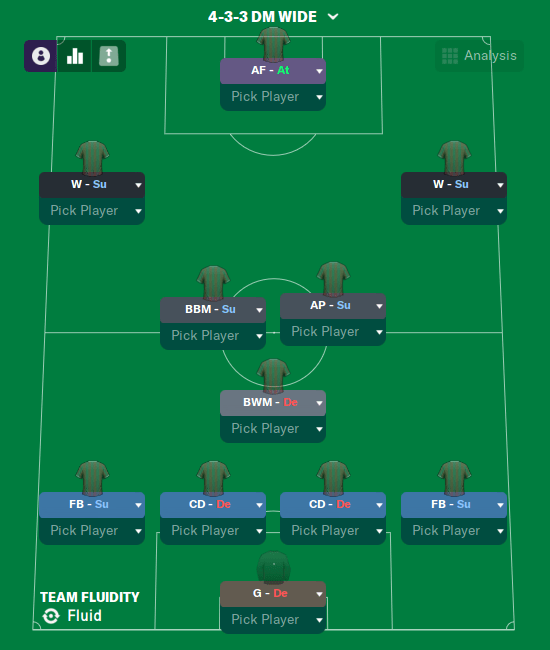
Formations like 4-3-2-1 or a Narrow 4-2-3-1 can be more troublesome. Your DM will chase after the creator, but who is it really, and how can we help him decide. Again, watching closely the match either on Comprehensive Highlights or Full Match is recommended, at least for the initial minutes. You can target your DM’s efforts by assigning him a man-marking duty. You can also give opposition instructions to mark closer and force to the weak leg on the player you suspect can do the most harm.
Closing Comments
Football tacticians have often been compared to Chess Grandmasters. Of course, lots of factors that affect football don’t affect chess, and vice versa. However, on the issue of placing your pieces in the correct spots, there are similarities. If anything, football managers have an advantage; chess players have to start with all their pieces in the same spot, and gradually move them to put a trap in place. In football, you can set that trap even before the game starts. So maybe the next time you have a key match approaching, you know how to best utilise different formations in FM22 to get the result you need.
Enjoyed this? Here are other articles for you:
All New Fantasy Draft Guide in FM22
Five Great Bits of Advice from Staff Meetings on FM22
Improving your FM22 tactic using the Data Hub
Your New Save: Day One on Football Manager 2022
Don’t Let Your Dreams Be Memes
